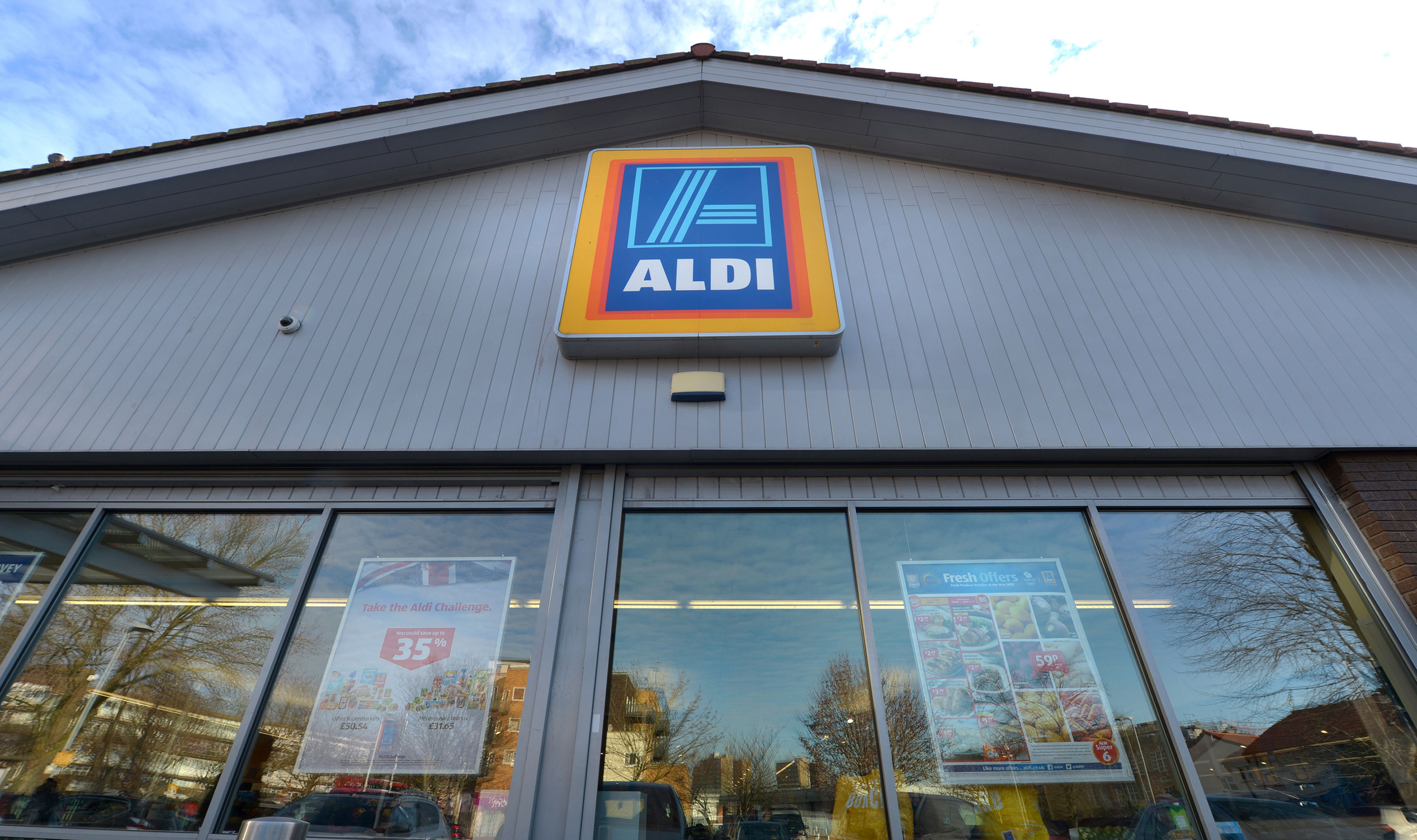
DISCOUNTER Aldi has overtaken the Co-operative to become Britain’s fifth largest grocer, according to new figures.
Aldi’s sales rose 12.4% year-on-year in the 12 weeks to January 29, taking its market share to 6.2%, ahead of the Co-op’s 6%, data from Kantar Worldpanel shows.
The past quarter saw Aldi attract 826,000 more shoppers than during the same period last year, underpinned by an extensive programme of store openings.
Supermarket sales overall were up 1.7% on last year, with eight of the nine major retailers seeing growth over the quarter.
Kantar said supply issues affecting fresh produce over the last few weeks had affected sales.
Morrisons was the fastest-growing retailer within the big four, increasing its market share for the first time since June 2015 with a sales increase of 1.9% year on year, helped mainly by customer demand for its premium own label range.
Tesco grew for the fifth period in a row – albeit at a slower rate than previously – with sales up 0.3%, resulting in a market share drop to 28.1%.
Sainsbury’s sales remained flat, while Asda suffered a 1.9% fall but managed to increase the number of shoppers visiting its stores compared to the same period last year.
Elsewhere, Waitrose, Lidl and Iceland all continued to increase sales by 3.4%, 9.4% and 8.6% respectively.
Meanwhile, rising prices – which consumers saw at Christmas for the first time since 2014 – have continued into 2017, with like-for-like inflation on a basket of everyday groceries climbing to 0.7%.
Kantar said the increase would mean shoppers would find themselves around £27 worse off if prices continue to rise at the same rate for the rest of 2017.
Fraser McKevitt, head of retail and consumer insight at Kantar Worldpanel, said: “Just a decade ago Aldi was the UK’s tenth largest food retailer, accounting for less than 2% of the grocery market.
“Since then the grocer has grown rapidly, climbing the rankings by an impressive five places to hold a 6.2% market share.”
Aldi UK and Ireland chief executive Matthew Barnes said: “Aldi customers get products of comparable quality to the leading brands at prices that are significantly cheaper than any of our competitors.
“This unique offering is resonating with British shoppers and we are opening 70 new stores this year to help keep up with customer demand.”
Here is the latest ranking of all the major grocers, according to market share figures from Kantar Worldpanel.
1. Tesco 28.1%
2. Sainsbury’s 16.5%
3. Asda 15.6%
4. Morrisons 10.9%
5. Aldi 6.2%
6. Co-op 6%
7. Waitrose 5.3%
8. Lidl 4.5%
9. Iceland 2.3%
Other multiples 2.9%

Enjoy the convenience of having The Sunday Post delivered as a digital ePaper straight to your smartphone, tablet or computer.
Subscribe for only £5.49 a month and enjoy all the benefits of the printed paper as a digital replica.
Subscribe